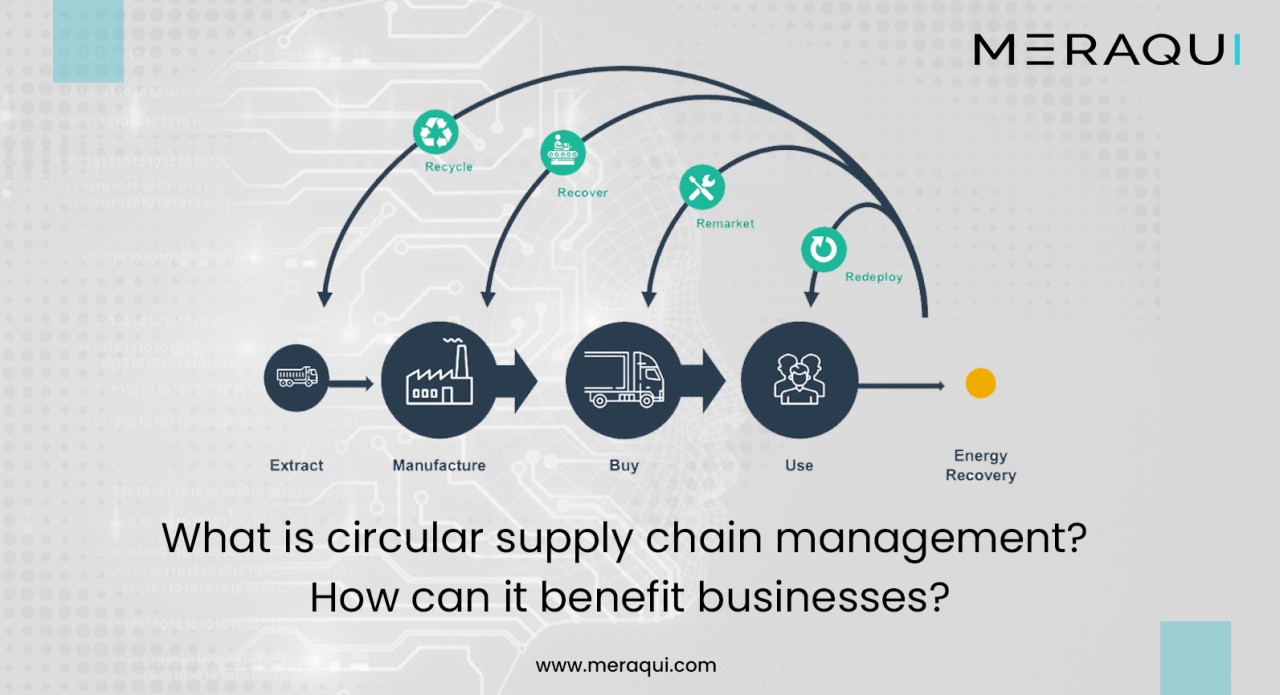The supply chain comprises a network of individuals, organizations, and many other faculties that are used to convert raw materials into a finished product. It consists of everything, from procurement of raw materials to delivery of goods to the final destination.
hashtag#Supply hashtag#chain hashtag#management deals with the entire management process so that the flow of goods within the supply chain can be easy.
Since a long time, the supply chain is linear. But now, the linear supply chain has been transformed into a circular supply chain. A hashtag#circular supply chain means the manufacturing department recycles and reuses discarded raw materials. This can be used in producing a new product.
The main objective of circular supply chain management is to reduce waste. Natural resources are on the verge of extinction. Therefore, resources should be used effectively. Sustainability of resources is a significant notion of concern, and the government is trying all its way to implement a circular supply chain so that we can save resources and it does not replenish from our mother earth.
Not only this, but a circular supply chain also helps businesses. As everyone knows, polythene bags are difficult and expensive to recycle, and most of them end up in landfill sites; they need approx. 300 years to decompose. Companies have devised a solution and replaced polythene bags with cotton bags. They put up the company logo and its name, put the stuff inside the bag, and deliver it to the customer’s location. In this way, neither the ecological system will be disturbed, nor will it bother consumer consumption. This will also inspire people to make efforts to sustain resources so that our future generation will benefit.
Now let us look in-depth at how a circular supply chain is helpful for businesses to grow.
- Decrease in production cost:- As unused materials are recycled and used, there is little requirement for investment in the production sector. Old materials are used for the creation of new ones. Hence, it is cost-effective. The main motive of the circular supply chain is to focus on using less non-renewable materials and volatile materials.
- Resources are being judiciously used:- As discarded materials are effectively used for further production, there will be no requirement for excessive procurement of raw materials from natural resources. Natural resources will not be excessively used; they won’t diminish from the Earth. If we have plenty of natural resources, there will be no supply chain disruption due to the scarcity of raw materials. Hence, the entire process will be quick, and there will be no breakdown of any network parts.
- It will be cost-friendly:- If resources are scarce, manufacturers will face a breakdown in production. As there will be scarcity, prices of goods will hike. E.g., if there is a lack of cotton, cotton clothes’ costs will increase as procuring raw materials becomes difficult. Therefore, products will be delivered slowly as the entire process is getting delayed. In a circular supply chain, as raw materials are recycled and used, there will be no shortage, so that prices will stay the same.
- Abiding by government’s rule:- Government is becoming strict daily regarding environmental issues. It is forcing companies to use the method of reduce-reuse-recycle. When the resources are used sustainably, no environmental harm will be caused. If the companies follow the government’s protocols, they will be exempted from paying heavy fines and can distribute the profit among the team members. By following circular supply chain management, government ethics can be maintained.
Conclusion
Even though shifting from a linear to a circular model is not accessible, proper technology and the human brain are required to follow up this method. Technology will help in detecting the number of raw materials that will be necessary, and humans need to built-up the mindset of consciously using the resources. AI and machine learning will also help find alternatives or how the resources can be used so that the purpose of serving customers’ demands will be fulfilled and even raw materials can be nurtured.
hashtag#supplychain hashtag#scm hashtag#supplychain hashtag#management hashtag#supplychainmanagement hashtag#resources hashtag#production hashtag#manufacturing hashtag#customerexperience hashtag#Meraqui hashtag#global hashtag#circular hashtag#technologytrends hashtag#ai hashtag#machinelearning

